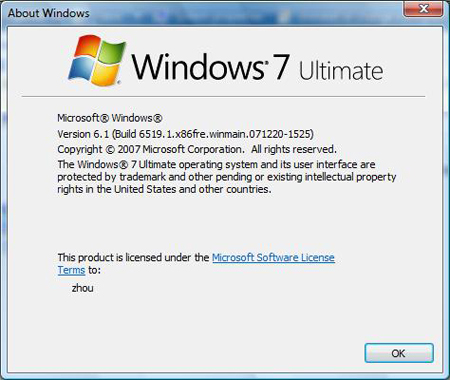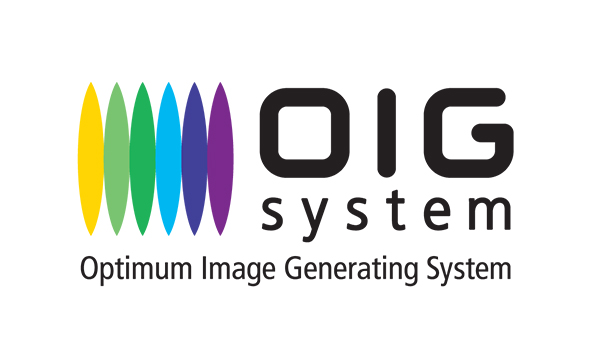Dv Media Pro 1.0 Vista
08 Aug 2017Quick. Time - Wikipedia. Quick. Time is an extensible multimedia framework developed by Apple Inc., capable of handling various formats of digital video, picture, sound, panoramic images, and interactivity. First made in 1. 99. Mac version, Quick. Time X, is currently available on Mac OS X Snow Leopard and newer. Apple ceased support for the Windows version of Quick. Time in 2. 01. 6.
Quick. Time for Microsoft Windows is downloadable as a standalone installation, and was bundled with Apple's i. Tunes prior to i. Tunes 1. 0. 5, but is no longer supported and therefore security vulnerabilities will no longer be patched. There are some other free player applications that rely on the Quick. Time framework, providing features not available in the basic Quick. Time Player. For example, i.
Tunes can export audio in WAV, AIFF, MP3, AAC, and Apple Lossless. In addition, mac. OS has a simple Apple.

Script that can be used to play a movie in full- screen mode. Until recently, Apple's professional applications (e. Final Cut Studio, Logic Studio) included a Quick. Time Pro license.
Pro keys are specific to the major version of Quick. Time for which they are purchased and unlock additional features of the Quick. Time Player application on mac. OS or Windows. Quick. Time 7 includes presets for exporting video to a video- capable i.

Pod, Apple TV, and the i. Phone. Saving existing Quick. Time movies from the web directly to a hard disk drive. This is often, but not always, either hidden or intentionally blocked in the standard mode. Two options exist for saving movies from a web browser. Save as source – This option will save the embedded video in its original format. Quick. Time Player X lacks cut, copy and paste and will only export to four formats, but its limited export feature is free.
Users do not have an option to upgrade to a Pro version of Quick. Time X, but those who have already purchased Quick. Time 7 Pro and are upgrading to Snow Leopard from a previous version of Mac OS X will have Quick.

Time 7 stored in the Utilities or user defined folder. Otherwise, users will have to install Quick. Time 7 from the . No installer for Quick.
Time 7 is included with these software packages, but users can download the Quick. Time 7 installer from the Apple support site. Quick. Time X on later versions of mac. OS support cut, copy and paste functions similarly to the way Quick.




Time 7 Pro did; the interface has been significantly modified to simplify these operations, however. The downloadable version of Quick. Time 7 is also still supported. Quick. Time framework. Command- line utilities afconvert (to convert audio formats), avconvert (to convert video formats) and qtmodernizer (to automatically convert older formats to H.
AAC) are provided with mac. OS for power users. Decoding video and audio, then sending the decoded stream to the graphics or audio subsystem for playback. In mac. OS, Quick.
Time sends video playback to the Quartz Extreme (Open. GL) Compositor. It is used to view picture files from the still image formats that Quick. Time supports. In mac. OS, it is replaced by Preview. Each track either contains a digitally encoded media stream (using a specific format) or a data reference to the media stream located in another file.

DVD-lab pro is a legacy product that conforms to DVD standard. It does NOT have BluRay (BD) authoring capabilities. Zoom Player is the Smartest, most Flexible and Customizable Media Player for the Windows PC. Based on our powerful 'Smart Play' technology, more media formats play. Media player. Download AVS Media Player from the official site. All key media formats supported. Features: WinDVD Pro 12: WinDVD Pro 11: WinDVD 11: Highlights - What's the difference? Movie and media playback software: 4K, HD, 3D. Powerful video.
The ability to contain abstract data references for the media data, and the separation of the media data from the media offsets and the track edit lists means that Quick. Time is particularly suited for editing, as it is capable of importing and editing in place (without data copying).
Other file formats that Quick. Time supports natively (to varying degrees) include AIFF, WAV, DV- DIF, MP3, and MPEG program stream.
Nero Platinum combines dozens of programs in an ingenious package - burn, copy, edit, stream, rip and convert.
Vegas Pro 13 can now open Movie Studio 13 project files. Added support for rendering XAVC HD (1920x1080) video in 50i and 59.94i formats. Fixed a bug that could cause. With your help, the Avid Customer Association (ACA) continues to create a deeper level of engagement between Avid and its customers, partners, and users.
With additional Quick. Time Components, it can also support ASF, Div.
X Media Format, Flash Video, Matroska, Ogg, and many others. Quick. Time and MPEG- 4. It in turn is used as the basis for other multimedia file formats (for example 3. GP, Motion JPEG 2.
This registration authority for code- points in . Accordingly, the MPEG- 4 container is designed to capture, edit, archive, and distribute media, unlike the simple file- as- stream approach of MPEG- 1 and MPEG- 2. Advanced Simple Profile (ASP) features, like B- frames, were unsupported (in contrast with, for example, encoders such as Xvi. D or 3ivx). Quick. Time 7 supports the H.
MP4, being an international standard, has more support. This is especially true on hardware devices, such as the Sony PSP and various DVD players; on the software side, most Direct. Show / Video for Windows codec packs.
Quick. Time 7 now supports multi- channel AAC- LC and HE- AAC audio (used, for example, in the high- definition trailers on Apple's site. The lead developer of Quick.
Time, Bruce Leak, ran the first public demonstration at the May 1. Worldwide Developers Conference, where he played Apple's famous 1.
The first publicly visible use of Quick. Time was Ben & Jerry's interactive factory tour (dubbed The Rik & Joe Show after its in- house developers). The Rik and Joe Show was demonstrated onstage at Mac. World in San Francisco when John Sculley announced Quick. Time. This added the Super. Mac- developed Cinepak vector- quantization video codec (initially known as Compact Video).
It could play video at 3. It also added text tracks, which allowed for captioning, lyrics and other potential uses. Apple contracted San Francisco Canyon Company to port Quick. Time to the Windows platform. Version 1. 0 of Quick.
Time for Windows provided only a subset of the full Quick. Time API, including only movie playback functions driven through the standard movie controller. Quick. Time 1. 6 came out the following year.
Version 1. 6. 2 first incorporated the . It added support for music tracks, which contained the equivalent of MIDI data and which could drive a sound- synthesis engine built into Quick. Time itself (using a limited set of instrument sounds licensed from Roland), or any external MIDI- compatible hardware, thereby producing sounds using only small amounts of movie data. Following Bruce Leak's departure to Web TV, the leadership of the Quick. Time team was taken over by Peter Hoddie. Quick. Time 2. 0 for Windows appeared in November 1.
Paul Charlton. As part of the development effort for cross- platform Quick. Time, Charlton (as architect and technical lead), along with ace individual contributor Michael Kellner and a small highly effective team including Keith Gurganus, ported a subset of the Macintosh Toolbox to Intel and other platforms (notably, MIPS and SGI Unix variants) as the enabling infrastructure for the Quick. Time Media Layer (QTML) which was first demonstrated at the Apple Worldwide Developers Conference (WWDC) in May 1.
The QTML later became the foundation for the Carbon API which allowed legacy Macintosh applications to run on the Darwin kernel in Mac OS X. They improved the music support and added sprite tracks which allowed the creation of complex animations with the addition of little more than the static sprite images to the size of the movie.
Quick. Time 2. 5 also fully integrated Quick. Time VR 2. 0. 1 into Quick.
Time as a Quick. Time extension. On January 1. 6, 1. Apple released the Quick. Time MPEG Extension (PPC only) as an add- on to Quick. Time 2. 5, which added software MPEG- 1 playback capabilities to Quick.
Time. Lawsuit against San Francisco Canyon. Microsoft and Intel were added to the lawsuit in 1. The suit ended in a settlement in 1. Quick. Time 3. x. Apple also licensed several third- party technologies for inclusion in Quick. Time 3. 0, including the Sorenson Video codec for advanced video compression, the QDesign Music codec for substantial audio compression, and the complete Roland Sound Canvas instrument set and GS Format extensions for improved playback of MIDI music files. It also added video effects which programmers could apply in real- time to video tracks.
Some of these effects would even respond to mouse clicks by the user, as part of the new movie interaction support (known as wired movies). Quick. Time interactive. Although similar in concept to the wired movies feature released as part of Quick. Time 3. 0, Quick. Time interactive was much more ambitious. It allowed any Quick.
Time movie to be a fully interactive and programmable container for media. A special track type was added that contained an interpreter for a custom programming language based on 6. This supported a comprehensive user interaction model for mouse and keyboard event handling based in part on the AML language from the Apple Media Tool. The Quick. Time interactive movie was to have been the playback format for the next generation of Hyper. Card authoring tool.
Both the Quick. Time interactive and the Hyper. Card 3. 0 projects were canceled in order to concentrate engineering resources on streaming support for Quick.
Time 4. 0, and the projects were never released to the public. Quick. Time 4. x. Three minor updates (versions 4. It was accompanied by the release of the free Quick.
Time Streaming Server version 1. Quick. Time 4 Player introduced brushed metal to the Macintosh user interface. On December 1. 7, 1. Apple provided Quick.
Time 4. 1, this version's first major update. This version was the last to have greater capabilities under Mac OS 9 than under Mac OS X, and the last version of Quick.
Time to support Mac OS versions 7. Power. PC Mac and Windows 9. Version 5. 0 was initially only released for Mac OS and Mac OS X on April 1. April 2. 3, 2. 00. Mac OS, Mac OS X, and Windows. Development of Quick.
Time 6 for Mac OS slowed considerably in early 2. Mac OS X v. 10. 2 in August 2. Quick. Time 6 for Mac OS continued on the 6. Versions 6. 5. 1 and 6. April 2. 8, 2. 00. October 2. 7, 2. 00. These versions would be the last to support Windows 9.
Me. The 6. 5 family added the following features. Version 7. 0. 4, released on January 1.
But it suffered numerous bugs, including a buffer overrun, which is more problematic to most users. Apple dropped support for Windows 2. Quick. Time 7. 2 on July 1. Quick. Time 7. 2 is the first version for Windows Vista.


/https%3A%2F%2Fassets.over-blog.com%2Ft%2Fcedistic%2Fcamera.png)
/image%2F0000001%2F20170726%2Fob_c1bae2_12.jpg)